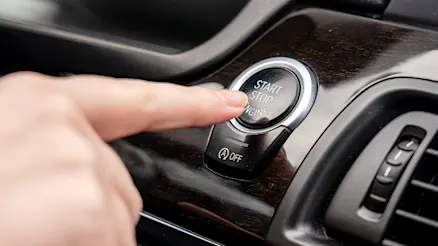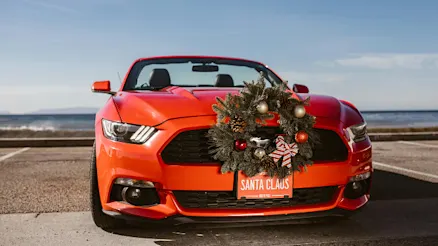
Why does my car behave differently when I start it in the morning?
Ever notice your car feels different in the morning? Learn why cold starts affect performance and how to keep your car running smoothly year-round.


Ever notice your car feels different in the morning? Learn why cold starts affect performance and how to keep your car running smoothly year-round.

Regularly checking your tyre pressure is crucial to your vehicle’s safety, fuel economy and optimal driving.

Looking for the perfect gift for the car enthusiast in your life? Carma’s experts have you covered.
We tend to hop in the car feeling pretty confident about knowing the rules. But do we? Australia has over 300 model road rules, with each state and territory making their own specific decisions on top of that. It’s entirely possible we’ve all broken a few regulations without knowing. So from the misunderstood to the more obscure road rules, here are some that might actually come as a surprise.
You’re probably used to giving way to your right as you approach a roundabout, because that simply makes sense with the flow of traffic. It’s also how many of us were taught. But technically speaking, the rule is to give way to all vehicles that are already in the roundabout. “That’s the same thing!”, you might say. Well, most of the time. But if two cars approach a roundabout from opposite sides at the same time, the car that enters the roundabout first has the right of way. Sure – the best approach is still to watch for a space to your right and enter when safe, but it’s handy to know this commonly misunderstood rule all the same.
There are two things that you really don’t want to delay in Australia: firefighting water and the postal service (which, granted, is already pretty slow). That’s why there are rules about both on our roads. Rule 199 of the Australian Road Rules forbids parking within 3 metres of an Australia Post letter box, unless you’re dropping off or picking up either passengers or mail. It’s also essential to leave at least 1 metre around a fire hydrant or fire hydrant indicator. Public bus drivers and taxi drivers have exemptions if they drop by within their designated zones, but otherwise getting in the way is a big no-go!
When you’re desperately searching for a car park and there’s one on the other side of a two-way road, it might be tempting to zoom across and nab the spot. However, across Australia you could land in trouble if you do. State and territory laws are based on the Australian Road Rules which state that drivers must position vehicles to face the direction of traffic.
It’s also important to do the done thing when it comes to angled parking. So you can’t go rogue and reverse into a 45° forward-facing parking spot, or drive forwards into a reverse angle parking spot (shout out to NSW country towns). To be fair though, you’d probably have to work pretty hard to do either of these things with a bank of traffic behind you.
It can be a surprise to some that driving too slowly isn’t explicitly illegal in Australia. However – Rule 125 of the Australian Road Rules has been widely adopted across the states and territories, and this rule does prohibit the unreasonable obstruction of drivers or pedestrians. The national model law points out that driving slowly isn’t necessarily an obstruction, but driving abnormally slow is. The example given is driving 20 km/h in a 80km/h zone for no good reason. So while you’re not going to get in hot water for going slightly under the speed limit, you could be in trouble for extreme and unnecessary dawdling.

It’s generally accepted that the right lane is for overtaking and that everyone else should drive on the left, but did you know that specific circumstances apply to this rule? These specifics depend on where in Australia you’re driving. The legal obligation to stay left is somewhat dictated by the road’s speed limit and number of lanes. In NSW, for example, you must stick to the left on a multi-lane road if the speed limit is over 80km/h or if there’s a ‘Keep left unless overtaking’ sign in place. Naturally there are a few exemptions to this rule, including if you’re overtaking or moving past an obstruction. Car Expert gives a rundown on the stick-left rules in each state and territory. Of course, common sense prevails with this one, and it’s generally good practice to stick left whenever possible.
There are definitely some unique road rules tailored to the different states and territories. However none are quite so strange as WA’s recently-repealed law about driving bulk potatoes around in a car.
This law, which first came to pass in the Marketing of Potatoes Act 1946, decreed that no member of the public could transport more than 50kg of potatoes in their vehicle. Potato Inspectors from the Potato Marketing Authority had the right to stop and search a vehicle if they suspected the presence of too many ‘tatos. The fine was surprisingly high given the law was created in the 1940s, at up to $2,000 for a first offence and up to $5,000 for subsequent spud smuggling.
Happily this law was repealed in May 2021, so WA drivers can now fill their cars with potatoes without fear of them being impounded. What a relief!
If you’re on the hunt for your next car in Sydney, Carma really does provide an unexpected online car shopping experience. From detailed listings and easy trade-ins, to the 7-day trial, to a 3-month warranty included with every car, you might be surprised by just how enjoyable the buying process can be. As Julie M. says, who bought a Toyota Kluger through Carma: “Best car buying experience of all time. I will never walk into a dealership again.” Start your search, and find your car today.